|
|
|
Книги издательства «Oxford University Press»

|
Postmodernism has been a buzzword in contemporary society for the last decade. But how can it be defined? In this Very Short Introduction Christopher Butler challenges and explores the key ideas of postmodernists, and their engagement with theory, literature, the visual arts, film, architecture, and music. He treats artists, intellectuals, critics, and social scientists as if they were all members of a loosely constituted and quarrelsome political party — a party which includes such members as Cindy Sherman, Salman Rushdie, Jacques Derrida, Walter Abish, and Richard Rorty — creating a vastly entertaining framework in which to unravel the mysteries of the postmodern condition, from the politicizing of museum culture to the cult of the politically correct. |
|
Essential reading for anyone interested in the African continent and the diversity of human history, this Very Short Introduction looks at Africa's past and reflects on the changing ways it has been imagined and represented. Key themes in current thinking about Africa's history are illustrated with a range of fascinating historical examples, drawn from over 5 millennia across this vast continent. |
|
No political concept is more used, and misused, than that of democracy. Nearly every regime today claims to be democratic, but not all 'democracies' allow free politics, and free politics existed long before democratic franchises. This book is a short account of the history of the doctrine and practice of democracy, from ancient Greece and Rome through the American, French, and Russian revolutions, and of the usages and practices associated with it in the modern world. It argues that democracy is a necessary but not a sufficient condition for good government, and that ideas of the rule of law, and of human rights, should in some situations limit democratic claims. |
|
Quantum Theory is the most revolutionary discovery in physics since Newton. This book gives a lucid, exciting, and accessible account of the surprising and counterintuitive ideas that shape our understanding of the sub-atomic world. It does not disguise the problems of interpretation that still remain unsettled 75 years after the initial discoveries. The main text makes no use of equations, but there is a Mathematical Appendix for those desiring stronger fare. Uncertainty, probabilistic physics, complementarity, the problematic character of measurement, and decoherence are among the many topics discussed. |
|
Interest in citizenship has never been higher. But what does it mean to be a citizen of a modern, complex community? Why is citizenship important? Can we create citizenship, and can we test for it? In this fascinating Very Short Introduction, Richard Bellamy explores the answers to these questions and more in a clear and accessible way. He approaches the subject from a political perspective, to address the complexities behind the major topical issues. Discussing the main models of citizenship, exploring how ideas of citizenship have changed through time from ancient Greece to the present, and examining notions of rights and democracy, he reveals the irreducibly political nature of citizenship today. |
|
Thomas Hobbes, the first great English political philosopher, has long had the reputation of being a pessimistic atheist, who saw human nature as inevitably evil and proposed a totalitarian state to subdue human failings. In this illuminating study, Richard Tuck re-evaluates Hobbes's philosophy and dispels these myths, revealing him to have been passionately concerned with the refutation of scepticism, and to have developed a theory of knowledge which rivalled that of Descartes in its importance. |
|
Soren Kierkegaard (1813-55), one of the most original thinkers of the nineteenth century, wrote widely on religious, psychological, and literary themes. This book shows how Kierkegaard developed his views in emphatic opposition to prevailing opinions. It describes his reaction to the ethical and religious theories of Kant and Hegel, and it also contrasts his position with doctrines advanced by men like Feuerbach and Marx. Kierkegaard's seminal diagnosis of the human condition, which emphasizes the significance of individual choice, has arguably been his most striking philosophical legacy, particularly for the growth of existentialism. Both that and his arresting but paradoxical conception of religious belief are critically discussed, and Patrick Gardiner concludes this lucid introduction by showing how Kierkegaard has influenced contemporary thought. |
|
Issues in medical ethics are rarely out of the media and it is an area of ethics that has particular interest for the general public as well as the medical practitioner. This short and accessible introduction provides an invaluable tool with which to think about the ethical values that lie at the heart of medicine. Tony Hope deals with the thorny moral questions such as euthanasia and the morality of killing, and also explores political questions such as: how should health care resources be distributed fairly? Each chapter in this book considers a different issue: genetics, modern reproductive technologies, resource allocation, mental health, medical research, and discusses controversial questions such as: — Who should have access to reproductive technology? — Who should pay? — Is it right to fund expensive drug treatment for individuals? — Should active euthanasia be legalized? — Should treatment for mental illness be imposed on patients without their consent? — Who should have access to information from genetic testing? — Should we require consent for the use of dead bodies or organs in medical research? |

|
Bertrand Russell (1872-1970) is one of the most famous and important philosophers of the twentieth century. In this account of his life and work A.C. Grayling introduces both his technical contributions to logic and philosophy, and his wide-ranging views on education, politics, war, and sexual morality. Russell is credited with being one of the prime movers of Analytic Philosophy, and with having played a part in the revolution in social attitudes witnessed throughout the twentieth-century world. This introduction gives a clear survey of Russell's achievements across their whole range. |

|
What is science? Is there a real difference between science and myth? Is science objective? Can science explain everything? This Very Short Introduction provides a concise overview of the main themes of contemporary philosophy of science. Beginning with a short history of science to set the scene, Samir Okasha goes on to investigate the nature of scientific reasoning, scientific explanation, revolutions in science, and theories such as realism and anti-realism. He also looks at philosophical issues in particular sciences, including the problem of classification in biology, and the nature of space and time in physics. The final chapter touches on the conflicts between science and religion, and explores whether science is ultimately a good thing. |
|
This book explores Nelson Mandela's personal development as well as his public activism, from his childhood as a member of the Thembu royal house through his emergence in the 1950s as a nationalist celebrity, his martyrdom in prison and, finally, his contemporary canonization as a transnational icon of liberal democracy. Though primarily a political biography which will concern itself with Mandela's role as an historical actor, this book also looks at the effects of political myth. Tom Lodge explores the different ways in which Nelson Mandela's life has been interpreted and the effects of his leadership on the making of modern South Africa, and, more generally, his importance as an exemplary modern day hero. |
|
Christian images have a long history within the Western art tradition from the narrative and devotional works of the Medieval and Renaissance periods, to the radical new interpretations of the twenty-first century. This fascinating new book explores the changing nature of the representation of key themes and subjects found in Christian art, covering the Eucharist, the crucifixion, the Virgin Mary, and the saints. Other sections deal with the changes to Christian art after the sixteenth-century Reformation, and with Christian art in the modern world. Within these themes, the book explores the work of major artists such as Memling, Holbein, El Greco and Rossetti, and well-known examples including the frescoes of St Francis at Assisi. Didactic and consciously devotional works are discussed alongside the controversial work of contemporary artists such as Andres Serrano and Chris Ofili. |
|
We make choices all the time — about trivial matters, about how to spend our money, about how to spend our time, about what to do with our lives. And we are also constantly judging the decisions other people make as rational or irrational. But what kind of criteria are we applying when we say that a choice is rational? What guides our own choices, especially in cases where we don't have complete information about the outcomes? What strategies should be applied in making decisions which affect a lot of people, as in the case of government policy? This book explores what it means to be rational in all these contexts. It introduces ideas from economics, philosophy, and other areas, showing how the theory applies to decisions in everyday life, and to particular situations such as gambling and the allocation of resources. |
|
This book is a clear and informative introduction to cryptography and data protection — subjects of considerable social and political importance. It explains what algorithms do, how they are used, the risks associated with using them, and why governments should be concerned. Important areas are highlighted, such as Stream Ciphers, block ciphers, public key algorithms, digital signatures, and applications such as e-commerce. This book highlights the explosive impact of cryptography on modern society, with, for example, the evolution of the internet and the introduction of more sophisticated banking methods. |
|
Astronomy, perhaps the first of the sciences, was already well developed by the time of Christ. Seventeen centuries later, after Newton showed that the movements of the planets could be explained in terms of gravitation, it became the paradigm for the mathematical sciences. In the nineteenth century the analysis of star-light allowed astrophysicists to determine both the chemical composition and the radial velocities of celestial bodies, while the development of photography enabled distant objects invisible to the human eye, to be studied and measured in comfort. Technical developments during and since the Second World War have greatly enlarged the scope of the science by permitting the study of radiation. This is a fascinating introduction to the history of Western astronomy, from prehistoric times to the origins of astrophysics in the mid-nineteenth century. Historical records are first found in Babylon and Egypt, and after two millennia the arithmetical astronomy of the Babylonians merged with the Greek geometrical approach to culminate in the Almagest of Ptolemy. This legacy was transmitted to the Latin West via Islam, and led to Copernicus's claim that the Earth is in motion. In justifying this Kepler converted astronomy into a branch of dynamics, leading to Newton's universal law of gravity. The book concludes with eighteenth and nineteenth-century applications of Newton's law, and the first explorations of the universe of stars. |
|
For generations, the ground beneath the feet of our ancestors seemed solid and unchanging. Around 30 years ago, two things happened that were to revolutionize the understanding of our home planet. First, geologists realized that the continents themselves were drifting across the surface of the globe and that oceans were being created and destroyed. Secondly, pictures of the entire planet were returned from space. As the astronomer Fred Hoyle had predicted, this 'let loose an idea as powerful as any in history'. Suddenly, the Earth began to be viewed as a single entity; a dynamic, interacting whole, controlled by complex processes we scarcely understood. It began to seem less solid. As one astronaut put it, 'a blue jewel on black velvet; small, fragile and touchingly alone'. Geologists at last were able to see the whole as well as the detail; the wood as well as the trees. This book brings their account up to date with the latest understanding of the processes that govern our planet. |
|
Film is considered by some to be the most dominant art form of the twentieth century. It is many things, but it has become above all a means of telling stories through images and sounds. The stories are often offered to us as quite false, frankly and beautifully fantastic, and they are sometimes insistently said to be true. But they are stories in both cases, and there are very few films, even in avant-garde art, that don't imply or quietly slip into narrative. This story element is important, and is closely connected with the simplest fact about moving pictures: they do move. Even the older meanings of the word 'film' — a membrane, a covering, a veil, an emanation — now seem to have something to do with moving pictures. Many people believe films are an instrument of illusion, an emphatic way of seeing what is not there; and this capacity has been both celebrated and condemned. 'Like a movie' mostly means like some sort of fairy-tale. But what about the reverse proposition: that more than any other invention film brings us close to the world as it actually is? 'Photography is truth', a character says in a film by Jean-Luc Godard. 'And cinema is the truth twenty-four times per second'. The same claim is made every day, albeit less epigrammatically, by newsreels and surveillance cameras. In this Very Short Introduction Michael Wood provides a brief history and examination of the nature of the medium of film, considering its role and impact on society as well as its future in the digital age. |
|
This book is not about myths, but about approaches to myth, from all of the major disciplines, including science, religion, philosophy, literature, and psychology. The fate of the preternaturally beautiful Adonis is one of the main fables upon which Segal focuses, in an attempt to analyse the various different theories of myth. Where the theory does not work, he substitutes another myth, showing that, for all their claims to all-inclusiveness, certain theories, in fact, only apply to specific kinds of myths. A uniform set of questions is provided, to elucidate both the strengths and the weaknesses of the conjectures. A survey of the past 300 years of theorizing on myth, this book takes into account the work of such prominent thinkers as Albert Camus, Claude Levi-Strauss, Roland Barthes, C. G. Jung, and Sigmund Freud. Finally, Segal considers the future study of myth, and the possible function of myth in the world as the adult equivalent of play. |
|
Botticelli, Holbein, Leonardo, Durer, Michelangelo: the names are familiar, as are the works, such as the Last Supper fresco, or the monumental marble statue of David. But who were these artists, why did they produce such memorable images, and how would their original beholders have viewed these objects? Was the Renaissance only about great masters and masterpieces, or were mistresses also involved, such as women artists and patrons? And what about the 'minor' — pieces that Renaissance men and women would have encountered in homes, churches and civic spaces? This exciting and stimulating volume will answer such questions by considering both famous and lesser-known artists, patrons and works of art within the cultural and historical context of Renaissance Europe. |
|
This Very Short Introduction traces the history of paleoanthropology from its beginnings in the eighteenth century to the latest fossil finds. Although concentrating on the fossil evidence for human evolution, it also covers the latest genetic evidence about regional variations in the modern human genome that relate to our evolutionary history. Bernard Wood draws on over thirty years of experience to provide an insiders view of the field and some of the personalities in it, and demonstrates that our understanding of human evolution is critically dependent on advances in related sciences such as paleoclimatology, geochronology, systematics, genetics, and developmental biology. |
|